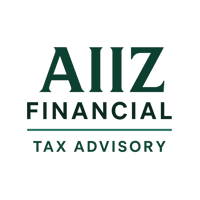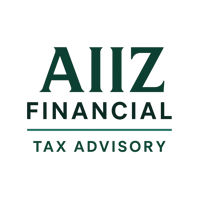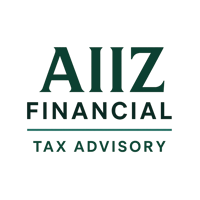Tax planning isn’t just for the wealthy or big businesses—it’s a crucial financial strategy that...
Year-Round Tax Planning: How to Stay Ahead and Save All Year Long
Taxes don’t have to be a last-minute scramble. With proactive year-round planning, you can optimize deductions, avoid surprises, and ensure you're always one step ahead of the curve.
1. Set the Foundation Early
Start in January instead of waiting for April. Review the previous year’s return with a tax professional—identify missed opportunities and think about adjustments for this year. This head start gives you clarity on where you stand and what to watch for.
2. Embrace Quarterly Reviews
Instead of waiting until year’s end, check in every quarter:
-
Q1: Review withholding, estimated taxes, and cash flow.
-
Mid-Year: Assess investments, retirement contributions, and business income.
-
Late Summer/Early Fall: Confirm major deductions and project taxable income.
-
Q4: Reassess major financial moves—charitable giving, itemizing, retirement plan contributions, etc.
3. Leverage Key Deductions, Strategically
Certain tax actions are more effective when timed correctly:
-
Retirement Savings: Maximize contributions to IRAs, 401(k)s, SEP IRAs before year-end.
-
Charitable Giving: Bunch contributions into alternate years to exceed standard deduction thresholds.
-
Business Expenses: Purchase equipment or supplies in Q4 to reduce taxable income.
-
Flexible Spending (FSA/HSA): Use wisely—FSAs often require funds to be used within the plan year.
4. Know Tax Law Updates
Tax law adjustments happen frequently. Year-round attention ensures you don’t miss changes that could affect:
-
New credits or deduction thresholds
-
Retirement plan limits
-
Business tax incentives or depreciation rules
You’ll avoid scrambling to catch up.
5. Plan for Life Events
Major life changes—like having a baby, getting married, buying a home, going freelance, or starting a business—should trigger a tax strategy update. These events often introduce deductions, credits, or filing status changes that can significantly affect your liability.
6. Track, Track, Track
Maintain a simple method—like a spreadsheet or app—for ongoing documentation:
-
Charitable receipts
-
Business mileage, equipment, and home office costs
-
Medical expenses
-
Estimated tax payments
Smart tracking means less scrambling in April.
7. Partner with a Professional
Tax strategy isn’t one-size-fits-all. Working with AIIZ Financial ensures you get personalized guidance—whether you’re filing as an individual, run a business, or juggle real estate ventures. Our year-round support identifies timely opportunities and helps you avoid costly mistakes.
Monthly Planning Checklist
| Month | Action Item |
|---|---|
| January | Review prior year return and set goals for this year |
| April | Finalize taxes; reassess withholding or estimated payments |
| June–July | Mid-year check: Adjust deductions, retirement, tax withholdings |
| August | Refresh on new tax laws and lifetime contributions |
| October | Monitor life events and charitable giving |
| December | Execute year-end moves—retirement, donations, business investments |
Conclusion
Effective tax planning unfolds all year—not just between January and April. By staying focused and proactive, you’ll maximize savings, minimize stress, and turn tax season into just another checkpoint on your financial journey.
To stay ahead and simplify your tax planning, reach out to AIIZ Financial today. We're here to help you optimize every aspect of your tax strategy—any time of year.


